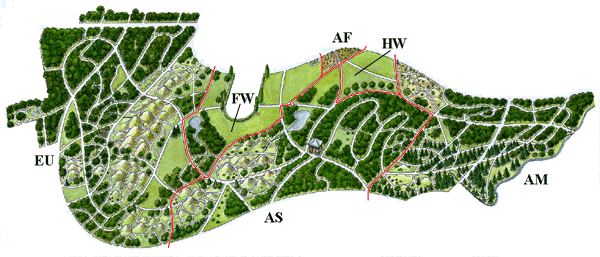| Occupying nearly a third of the entire garden's surface area, the plant geography section, with its network of winding paths, invites you to a walk through different plant formations of the Northern Hemisphere's temperate zones . There is nothing comparable in the world today to the twelve rock gardens featuring plants from different mountain regions, forests, heath, dune and steppe vegetation. It was designed by the former director, Adolf Engler (1844-1930), when moving the botanic garden to its present location in Dahlem. Take the opportunity to tramp from Europe to Asia crossing the Alps and the Himalyas, and continue your journey through the peaceful Japanese section to North America. Especially in early spring while the trees are still relatively bare, you will be enchanted by the patchwork of anemones, snowdrops, and related genera underneath the centennial trees of the "German beech forest" which turns into a shady, pleasantly cool area during hot summer months. Adjacent to the beech forest you will find stands of oak/hornbeam, pine/birch and fenland forests typical of the Central European landscape. Around the Japanese pavilion in the East Asian area of the plant geography section grows a mixed forest which gives an impression of the natural stands of trees in China, Japan and Korea. Further south, you will find yourself transported to North America, with forests from the Atlantic and Pacific coasts interspersed with flower-rich prairie sections. For more information see The Plant geography section in numbers. Continue the Little Tour...
|






